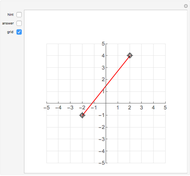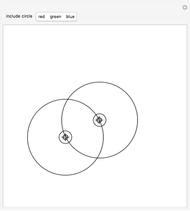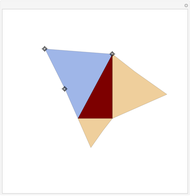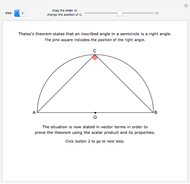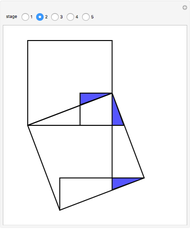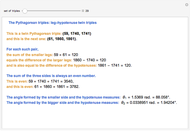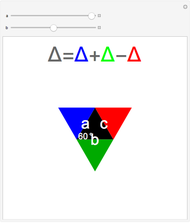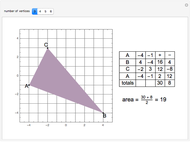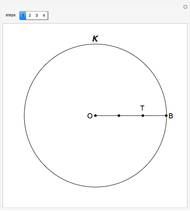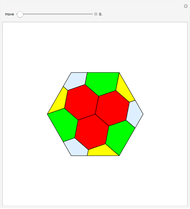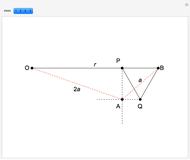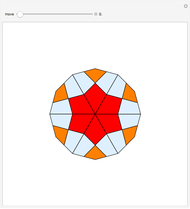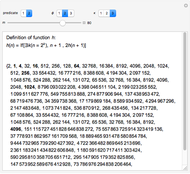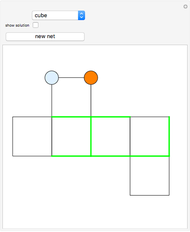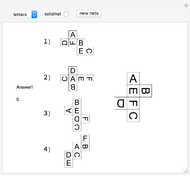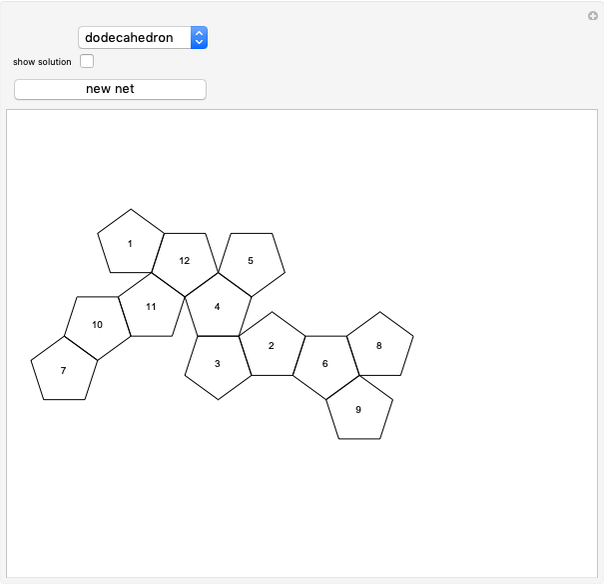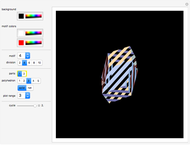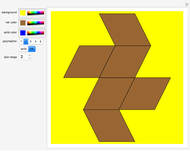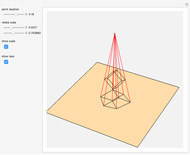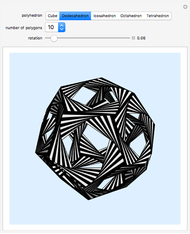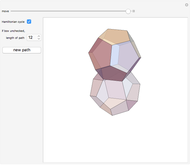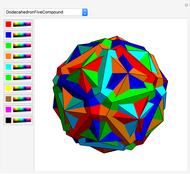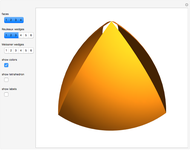The Eratosthenes Machine for Finding the Cube Root of Two

Requires a Wolfram Notebook System
Interact on desktop, mobile and cloud with the free Wolfram Player or other Wolfram Language products.
This Demonstration shows Eratosthenes's machine for finding two mean proportionals; that is, given lines  and
and  , find
, find  and
and  such that
such that  . If
. If  and
and  , the solution is
, the solution is  . Let the lengths of
. Let the lengths of  and
and  be 2 and 1, respectively. Move the second and third triangles so that points
be 2 and 1, respectively. Move the second and third triangles so that points  and
and  lie on the straight line
lie on the straight line  , giving the length of
, giving the length of  as
as  (approximately 1.25992…).
(approximately 1.25992…).
Contributed by: Izidor Hafner (July 2012)
Open content licensed under CC BY-NC-SA
Snapshots
Details
The problem of doubling the cube was to find  by ruler and compass, which was proved impossible [1]. This Demonstration shows a solution by sliding a line, which is not an allowable operation in a construction by ruler and compass.
by ruler and compass, which was proved impossible [1]. This Demonstration shows a solution by sliding a line, which is not an allowable operation in a construction by ruler and compass.
Reference
[1] J. J. O'Connor and E. F. Robertson."Doubling the Cube." MacTutor History of Mathematics archive. (Jun 26, 2012) www-history.mcs.st-and.ac.uk/HistTopics/Doubling_the_cube.html.
Permanent Citation













